Comet Q4 NEAT, the 13.8 May, 2004
Canon EOS 10D + Canon 100 mm f2.8 macro - stack of 6 x 60 seconds exposure - Toulouse (suburban)

C/2001
Q4 (NEAT)
spectrography
+ polarization
Comet Q4 NEAT, the
13.8 May, 2004
Canon EOS 10D + Canon 100 mm f2.8 macro - stack of 6 x 60
seconds exposure - Toulouse (suburban)
May 14.879 UT 2004 Observation
Observatory: Castanet Tolosan (France)
- IAU959
Observer: Christian Buil
Instrument: Takahashi
FS-128 refractor (5-inch aperture) - MERIS
spectrograph (bin. 2x2 - sampling of 5.75 A/pixel) + Audine KAF-0401E CCD
Cumulative exposure time of 12
minutes (stack of 6
two minutes frame)
The comet through a large slit
(order 0 image - pointing phase)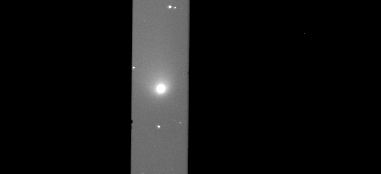
The comet through a more
narrow slit (order 0 image )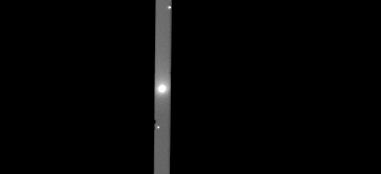
The 2-D spectrum of Q4 NEAT +
the spectrum of background sky (high pressure lamp spectral signature - click
here)
(artificial colour, but representative)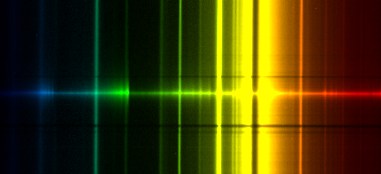
The 2-D spectrum of Q4 NEAT after
sky removal
Band heads of diatomic C2 are clearly shown.
(artificial colour,
but representative)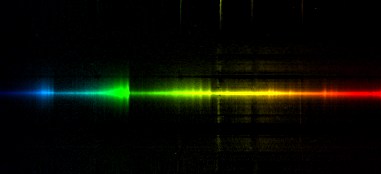
The spectral profile (nuclear
region).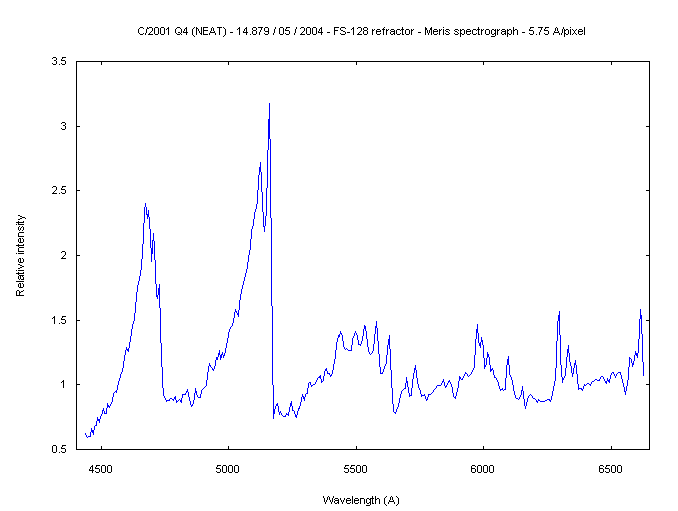
Note:
the spectrum is corrected for the instrumental spectral response.
Download
140504.dat
May 15.867 UT 2004 Observation
Observatory: Castanet Tolosan (France)
- IAU959
Observer: Christian Buil
Instrument: Takahashi
FS-128 refractor (5-inch aperture) - MERIS
spectrograph (bin. 2x2 - sampling of 5.50 A/pixel) + Audine KAF-0402ME CCD
Cumulative exposure time of 32
minutes (stack of 16
two minutes frame)
Bleue region of NEAT
(note the usage of a KAF-402ME CCD for its bleue sensitivity). CN band
at 3880 A is visible at left.
The spectral profile (nuclear
region) . Note the presence of CN band (cyanogen) at 3883 angstroms.
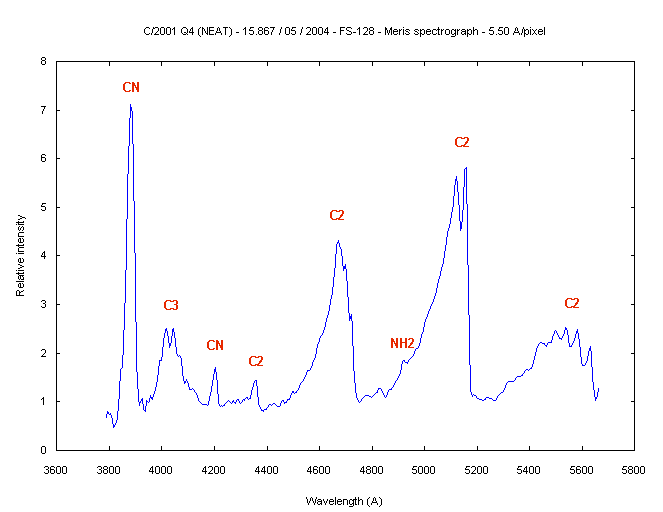
Note:
the spectrum is corrected for the instrumental spectral response.
Download
150504.dat
May 16.9 UT 2004 Observation
Polarization
analysis
Observatory: Castanet Tolosan (France)
- IAU959
Observer: Christian Buil
Instrument: Takahashi
FS-128 refractor (5-inch aperture) - Canon
EOS 10D - Linear polarizing
filter
Three position filter: 0° (stack of 24 x 30 seconds exposure) -
60° (stack of 24 x 30 seconds exposure) - 120° (stack of 24 x 30 seconds exposure)
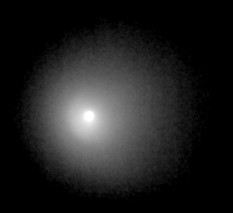
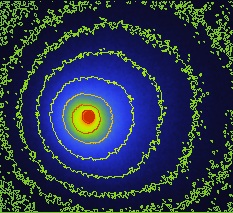
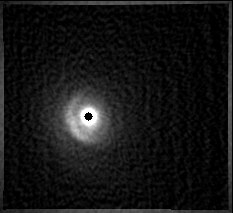
From
left to right:
(1) gray representation of central region (stack of the 72
x 30 seconds available exposures),
(2) false-colors + isophotes from a logarithm
intensity scale
(3) radial gradient of -4 pixels (note the jet in front the
nucleus).
The scale of this images is 1.47 arcsec/pixel. A median composite
of the individual frames permit to eliminate the field star trails.


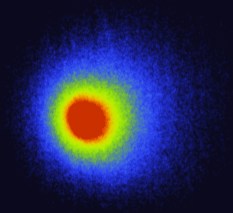
From
left to right:
(1) 0° orientation of the polarization filter (relative to
the declinaison great circles)
(2) 60° orientation of the polarization filter
(relative to the declinaison great circles)
(1) 120° orientation of the polarization
filter (relative to the declinaison great circles)
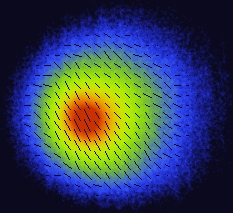
Polarization
map superimposed to a false-colors image. The orientation of the vectors
indicate the direction of the local polarization plane. The length of the vectors
indicates the degree of polarization. The polarisation level measured in the
immediate vicinity of the nucleus of 21%. The polarization degree front to the
nucleus (jet) is 15%. The mean polarization of the external part is typically
of 7%.